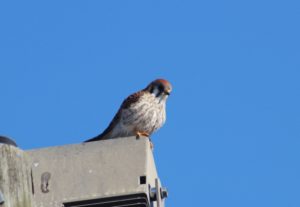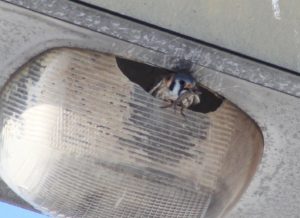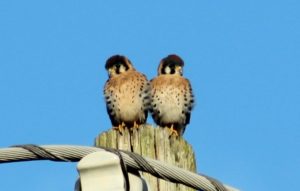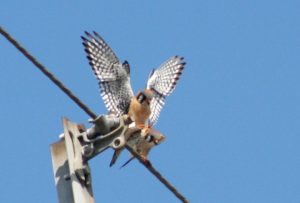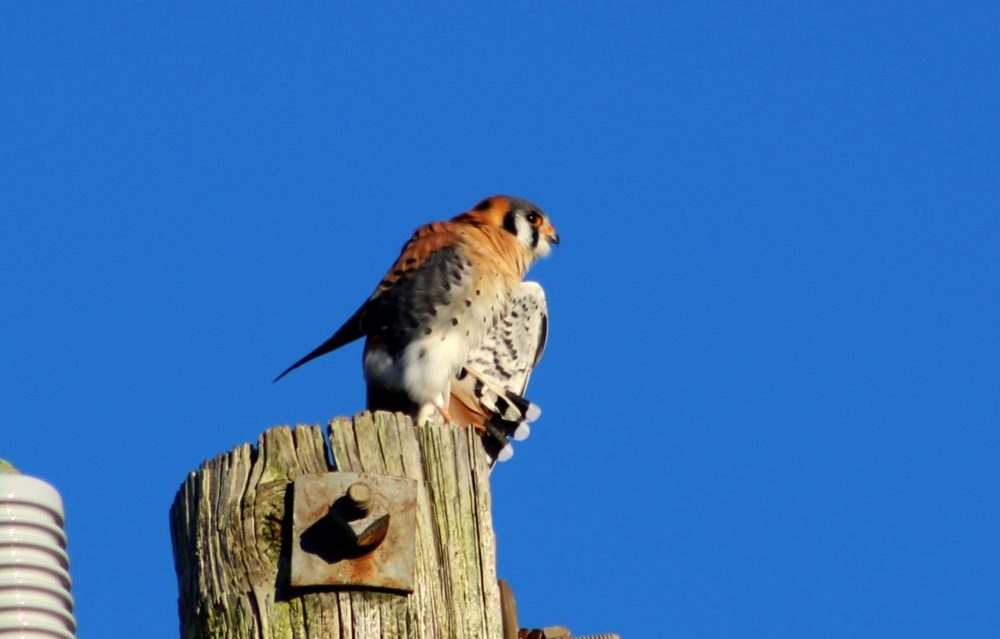
For several years I have done a nesting survey of our local nesting Southeastern American Kestrels. The information that I have gathered has been passed on to the Florida Wildlife Commission, who are responsible for trying to increase the population of this listed species.
The results of a one year survey was as follows;
170 Southeastern American Kestrels sighted
(53 fledglings, 61 adult males, 56 adult females)
62 nesting territories were found
28 nests verified with kestrels entering a cavity
2 nests were of a second brood for the adults
25 nests fledged young.
Interesting fact – none of the nests were in natural tree cavities. Telephone and electric poles, electric transmission towers, electric substation structures, Monk Parakeet nests, and buildings were utilized. This may point to the fact that the urban habitat does not contain the tall native trees once used by the nesting kestrels. My survey also included food utilized data. 76% of food noted was the Brown Anole Lizard, a non-native species.

